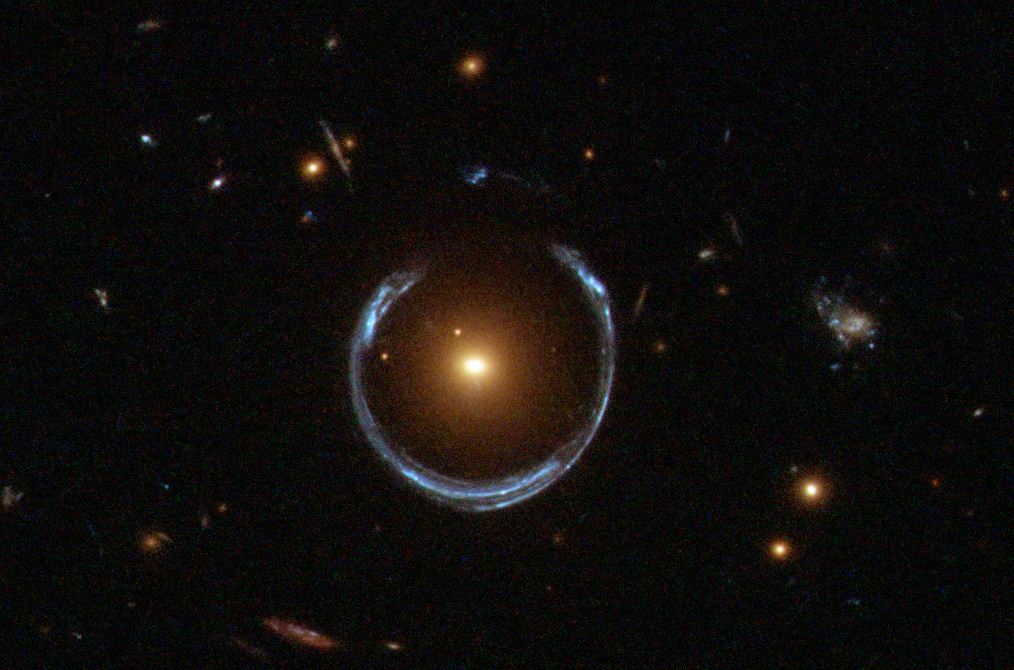Mystery Gravitational Lens Hints at Possible Primordial Black Holes, Dark Matter

Credit to Author: Michael Byrne| Date: Fri, 25 Aug 2017 16:00:00 +0000
Astronomers have an unexpected new tool for spying on distant galaxies. It comes in the form of, well, we don’t really know yet. It could be a primordial black hole, or possibly a wayward cluster of stars. We do know that its effect is a powerful gravitational lens, a phenomenon in which a gravitational field around a stellar body, like a star, deflects distant light sources.
The finding is described this month in the Astrophysical Journal by researchers at Caltech, Aalto University in Finland, and elsewhere. (An open-access preprint can be found at arXiv.) If the findings are confirmed, the lens could offer “a new and powerful probe of cosmological matter distribution,” which could even include elusive dark matter, according to the paper.
First, let’s dig into what exactly a gravitational lens is. A key feature of the universe is that gravity bends light. For example, that’s what’s going on in a black hole. In a black hole, light is bent to infinity so it can’t escape its own gravitational field. With other cosmic gravitational sources, the effect isn’t as terminal, but can still be pretty extreme. It’s easiest to just see it:
In the video clip, we see two galaxies. The first, a relatively stationary galaxy, acts as the lens When the smaller, and more distant galaxy passes behind, its light winds up around the closer galaxy all shredded and trippy. More important to astronomers is that the light is bent toward the observer, which means that the lens is really just doing the same thing as the lens of a telescope, albeit at an astronomical scale.
This is a useful phenomenon because it allows us to get close-ups of stellar objects that would otherwise remain distant. For example, the Optical Gravitational Lensing Experiment uses what’s known as “microlensing” to hunt for signs of dark matter. Since the project’s inception in 1992, it’s discovered several extrasolar planets using the microlensing technique.
The team behind the current paper has been combing through data from a survey of 1,800 active galaxies since 2008. In 2009, it focused on a galaxy called PKS 1413+135, which is about three billion light-years away. When it looked at the same galaxy again in 2014, they found that it had brightened, indicating the presence of an intervening lens.
The strange thing was that the team had no obvious gravitational sources to attribute the lens to. There’s just a vast something out there. Based on the team’s observations, this mysterious object is anywhere from 1,000 to 1,000,000 times the mass of our Sun. Given that range, possible candidates include globular star clusters and massive black holes.
That there’s some big cluster of stars out there that we just haven’t seen seems unlikely, which leaves us with primordial black holes, those born at nearly at the beginning of the universe. At the moment, they remain hypothetical, but if it turns out that there’s a large population of them out there, they could help explain dark matter. Primordial black holes have been suggested as one possible, if unlikely, dark matter candidate.
The degree of gravitational lensing observed here offers a key middle-ground dubbed “milli-lensing” to the technique between the the extreme distortions seen in the clip above and those seen through far more subtle microlensing techniques, which allows astronomers to get closeups of fairly small objects, like planets. This is largely uncharted territory, which is part of what makes the new find so exciting.